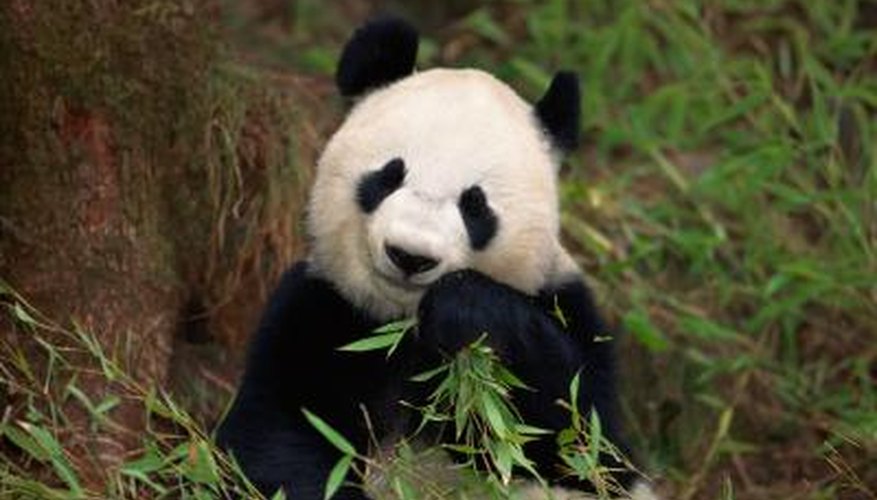For a grass, bamboo gets around. Bambuseae is a genus in the family of grasses called Poaceae. There are 1,000 species in 100 genera from small annuals (Poa annua) to towering, 100-foot timber bamboo (Dendrocalamus giganteus). The majority grow in tropical climates, but many have adapted themselves and spread to mountains and African deserts. Because they are so adaptable, they are used to create homes, musical instruments, weapons, paper and Asian foods.
Bengal Bamboo
Bengal bamboo is native to Southeast Asian rainforests where it grows in 40 to 100 degree Fahrenheit temperatures with an average of 50 to 260 inches of rainfall annually in an average humidity of 77 per cent to 88 per cent. Bengal bamboo has adapted by growing at one of the fastest rates of any plant, to 80 feet in 3 months. Once in the canopy, it absorbs sunlight to make its food by photosynthesis.
Bengal bamboo adapted to the extreme hydration of the rainforest by developing vascular bundles that absorb water and wick it up the cane, drinking in enormous amounts of water.
- Bengal bamboo is native to Southeast Asian rainforests where it grows in 40 to 100 degree Fahrenheit temperatures with an average of 50 to 260 inches of rainfall annually in an average humidity of 77 per cent to 88 per cent.
- Bengal bamboo adapted to the extreme hydration of the rainforest by developing vascular bundles that absorb water and wick it up the cane, drinking in enormous amounts of water.
It also saves energy by flowering only once in its lifespan, producing seed and dying.
Running Bamboo
Some bamboo species adapted to grow in temperate climates in Japan, Siberia, northern China and California. Plants adapted to cooler conditions by spreading underground. They create massive forests of clonal colonies from one parent.
Aerial stems (culms) known as canes grow from underground stems called rhizomes. Roots are borne at the nodes on the canes, where leaflike scales grow. Essentially clones, they allow the bamboo plant to spread from underground shoots. Black bamboo (Phyllostachys nigra) is so adapted to riparian habitats in southern California it is considered an invasive aggressor.
- Some bamboo species adapted to grow in temperate climates in Japan, Siberia, northern China and California.
- Essentially clones, they allow the bamboo plant to spread from underground shoots.
Mountain Bamboo
Tropical bamboos that grow from seed in thick clumps in countries within five degrees of the equator spread with the wind. A few bamboo have adapted to the harsh conditions of the Himalaya and Andes mountains and can survive long, sunless days and freezing winters.
Flowering Bamboo
Some bamboos are monocarpic, flowering only once in their lifespans. When pollinated, they flower, produce seeds and die in mass extinctions. Because they are all related, they share the same programming, which created the massive die-off in a southern Chinese forest in 1983 that threatened the survival of the resident pandas who eat bamboo exclusively.
The advantage of flowering once in a 120-year life cycle is theorised as a defensive adaptation. Rodents love bamboo grains. If bamboos flowered at predictable intervals, rats would destroy the seed crops. By fruiting irregularly over the lifetime of several rodent generations, bamboos protect their seeds. Although rodent numbers increase with the sudden food bonanza, they decrease over the following decades while bamboo forests regenerate.
- Some bamboos are monocarpic, flowering only once in their lifespans.
- By fruiting irregularly over the lifetime of several rodent generations, bamboos protect their seeds.
